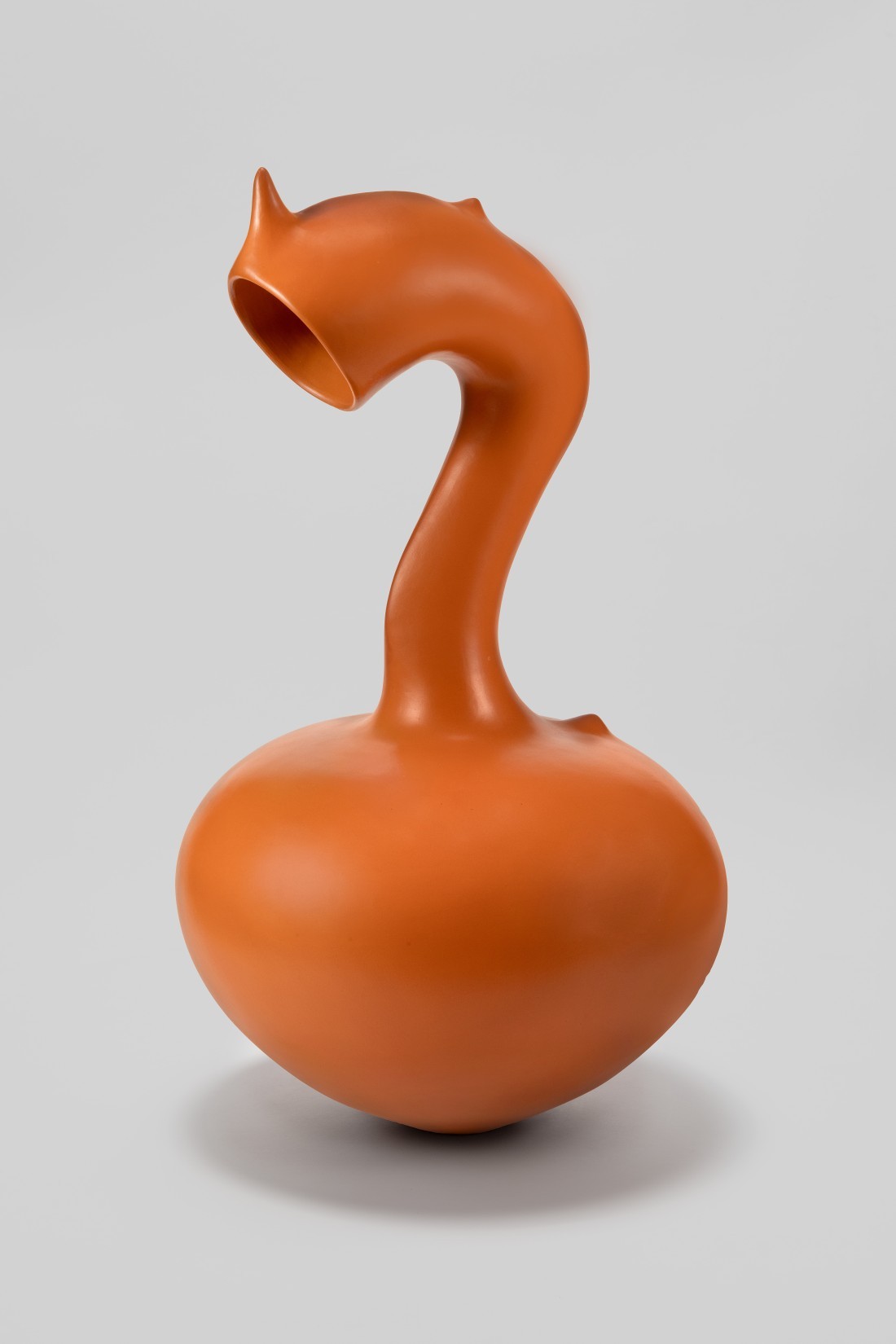The Ultimate Art: An Interview with Magdalene Odundo
A poem should be palpable and mute / As a globed fruit are the opening two lines of “Ars Poetica,” Archibald MacLeish’s imagist poem written in 1926. If you were to change the subject of the line from “poem” to “sculpture,” you would be getting at the essential quality of Magdalene Odundo’s ceramic vessels: their undeniable, embodied, palpable presence.
The title and source of MacLeish’s poem were a response to “The Art of Poetry,” a practical and aesthetic epistle written by the Roman poet Horace, around 15 BC. It is famous for the link it suggests between two art forms; ut pictura poesis, “as painting is, so is poetry.” Allowing another substitution reframes Horace’s pronouncement of ut scultura poesis and the shift captures the unique form and clarity of Odundo’s sculptures. They are exquisite.

Magdalene Odundo, Untitled, 1995, ceramic, 50.8 × 29.2 centimetres. Collection of the Maxine and Stuart Frankel Foundation for Art. Photo: PD Rearick. All photographs courtesy Gardiner Museum, Toronto.
They also address the history of their own making, and in that sense, they are not mute. What they articulate is the life of the artist who made them. Magdalene Odundo, a Dame of the British Empire, was born in Kenya in 1950 and experienced the process of colonization that was common in African countries. She was educated in a system designed and administered by the British, was taught by Roman Catholic nuns in missionary schools and was forbidden to speak her native language. In school she was exposed to European male artists (Braque, Brancusi, Matisse and Picasso) but not to a single Kenyan artist. She decided her approach to this imposed duality would be philosophical. “I started to understand the misplaced notion of African art being primitive and naïve and that its deeper meaning required deeper thinking,” she says in the following interview. “I turned the word ‘primitive’ around to mean purity and authenticity.”
The 21 sculptures included in “Magdalene Odundo: A Dialogue with Objects” occupy the centre of the room. Around the periphery are other objects, paintings and drawings she has chosen to facilitate the “historical lineage and continuity” that she uses “as a way of explaining why my work is what it is.” The works come from different cultures across five centuries; among the oldest is a Grecian Female Votive Figure carved in Parian marble from the 3rd century BCE; the most recent is Ploughing Liberty #18, a sculpture that combines a found farm tool and a hockey stick, 2021, by the Nigerian Canadian artist Oluseye Ogunlesi. There are also a pair of paintings by Helen Frankenthaler, a screen print by Joseph Albers and a tabletop steel sculpture by Anthony Caro. These works were selected by Odundo from museum and private collections in Toronto. Each articulates a quality of form, gesture, surface or colour that is quietly evident in Odundo’s own work. Among them is a single drawing in black ink on Japanese paper from Robert Motherwell’s Lyric Suite, 1965. Motherwell always said that if you could make a string quartet based on colour, black would be the cello.
That colour choice is music to Odundo’s ears. Of the 21 sculptures in her exhibition, only 5 are the natural orange colour of the clay and 16 are black. All her works are “Untitled,” and all are built through a pinch-and-pull method (she never uses a wheel). The surface is smoothed over, then burnished with polished pebbles or metal tools and are finally fired, occasionally many times. An orange work from 1995 in an American private foundation with its long neck and point on its head is vaguely dragon-like; a black sculpture from 1995 in the Yale University Art Collection has two ovals on its neck that could be earrings on a Flamenco dancer; another work from her “Symmetrical Series III,” 2022, dramatically combines the oxidized tones of black and tan; others have a surface that looks like smoke has been breathed onto the fired clay and has left a sfumato-like imprint. A curvaceously undulating black sculpture from the “Vessel Series II,” 2005–06, is an outright form of seduction. Odundo admits that the human form is “the central aspect of the work.… I think the body has an essential connection to an object. It’s a tactile piece of flesh or bone.”
Archibald MacLeish’s lean towards philosophy at the end of “Ars Poetica” registers the overall impact of Odundo’s sculptures. The final two lines of the poem affirm their ontological nature: “A poem should not mean / But be.” Like MacLeish’s ideal poem, these extraordinary sculptures embody all meanings in their absolute being. They just are.
“Magdalene Odundo: A Dialogue with Objects” is on exhibition at the Gardiner Museum in Toronto from October 19, 2023, to April 21, 2024. Border Crossings’ interview was conducted at the Gardiner Museum on the day the exhibition opened.
To read the interview with Magdalene Odundo, order a copy of Issue #163 here, or Subscribe today.

